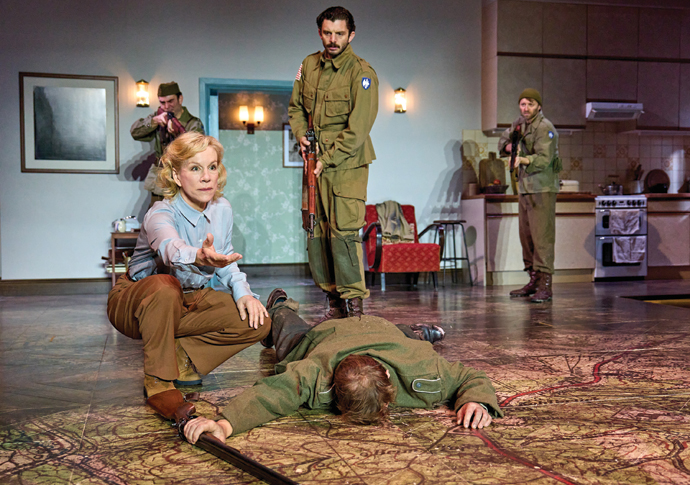Review: The Land of the Living, at Dorfman Theatre, National Theatre
Magnificent production set in Germany after the Second World War resonates powerfully
Friday, 26th September 2025 — By Lucy Popescu

Juliet Stevenson, Atilla Akinci, Michael Fox and Hubert Hanowicz in The Land of the Living [Manuel Harlan]
DAVID Lan’s searing drama, The Land of The Living, is a fictional story grounded in real events, informed by interviews with journalist and historian Gitta Sereny, who worked for the United Nations Relief and Rehabilitation Administration in southern Germany after the Second World War.
Juliet Stevenson plays Ruth, a young UN relief worker looking after displaced people in Bavaria. She learns that during the war, children with “Aryan” features were abducted from Eastern Europe and placed with childless German families.
Thomas (Darcy Tosun) is one such child, whom Ruth takes under her wing. She must decide whether to find and return him to his biological parents or leave him with the family he has grown up with.
Years later, in 1990, an older Thomas (Tom Wlaschiha) comes knocking at her door, seeking answers.
Lan’s play moves between 1945 and 1990, the story unfolding on Miriam Buether’s striking traverse set, which spills into the auditorium and allow the action to transitions seamlessly between locations.
Despite its 145-minute duration (with an interval), the intensity of Stephen Daldry’s magnificent production never falters, driven by three terrific central performances and a strong supporting cast.
Tosun is remarkably assured, conveying the anguish of a traumatised child, unsure whom to trust or what to believe.
Some audience members may find the subject matter challenging – Lan raises several ethical questions, refusing easy answers.
And yet The Land of The Living resonates powerfully, especially given recent reports of Ukrainian children being forcibly taken to Russia.
It’s also a sobering reminder of the trauma faced by displaced communities today.
Until November 1
nationaltheatre.org.uk/